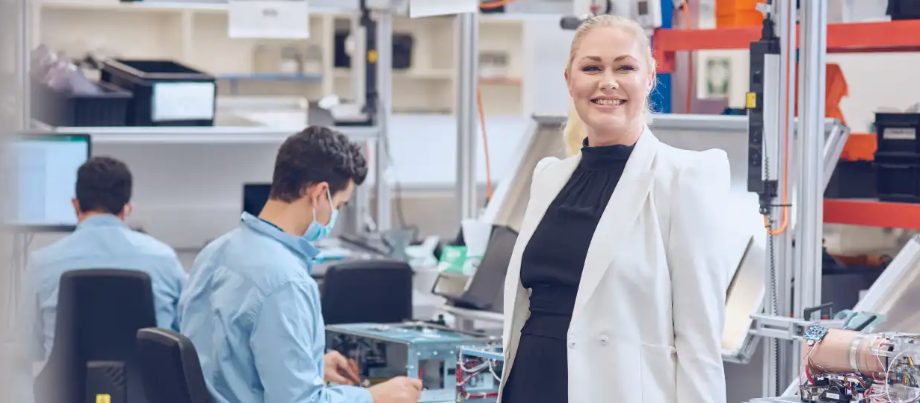Newsroom
October 5th 2020
Local manufacturing pivots from tracing terrorists to detecting COVID


When Samantha Ollerton moved to Australia from the US in 2019 to head Melbourne manufacturing start-up GreyScan, she knew the company's trace-explosive detection technology would be ground-breaking.
"It was incredibly exciting for me to see a technology platform that would completely revolutionise how we could find these kind of materials live in a counter-terrorism scenario," Ms Ollerton said.
But soon after taking the job, she began pivoting GreyScan's core technology to the fight agianst coronavirus, and later this year is hoping to roll out a three-minute COVID-19 breath test.
“What is exciting right now, and the most bizarre element of the pandemic, is that it really enabled us to focus our minds on that core platform and what we could do with it," the chemist and forensic scientist said.
Initially developed by the University of Tasmania, GreyScan's core technology can be used to detect a range of trace elements, including explosive materials, bacteria, microbes and – of course – viruses.
Jefferson Harcourt, executive chairman of Grey Innovation, which specialises in commercialising university research and is a principal backer of GreyScan, said the company would soon start live COVID-19 testing.
"We're very confident of a perfectly good performance because we can see that in other similar viruses," he said. "We just have to hit a few more gates before we can put on the big moon suits and go and play with COVID."
Grey Innovation has a track record of delivering local manufacturing projects, having produced 2000 ventilators for the federal government early in the pandemic.
If successful in live trials, GreyScan's locally built test kit could be deployed worldwide and serve as an example of the type of high-tech manufacturing the government wants developed in Australia.
Prime Minister Scott Morrison this week unveiled a $1.5 billion package to promote priority investment areas in manufacturing – resources and critical minerals, food and beverages, medical products, recycling and clean energy, defence and space – as part of his post-recession recovery plans.
"The overarching objective of our modern manufacturing strategy is to build scale and capture income in high-value areas of manufacturing," Mr Morrison said in a speech at the National Press Club on Wednesday.
"The reality is we cannot and should not seek to reach global scale in a large number of sectors. This is an important lesson from other small and medium-sized high-income economies which have leveraged home-grown manufacturing into global success."
Mr Harcourt is happy with the government's priorities areas, noting Grey Innovation is currently invested in companies operating in five of them.
"We expect that we'll be participating heavily in those programs. But as I say, $1.5 billion is a good start, but we'll be using any money we get to leverage up the private investment to really multiply that up," he said.
He also wants to see superannuation funds get more involved in the commercialisation because of their long-term investment horizons.
“The time frame is very compatible," he said. "The funding horizon for private equity or the pre-IPO game is just way too short. I think we need to get off that sugar hit, the sort of Afterpays of the world. There's no way we're going to be able to, as a sector, provide those sorts of returns."
“If you look at Microsoft, for example, it took them years to commercialise Windows ... And that's from a company who had basically unlimited funding and owned the markets they were in. So, this stuff takes time."
Government, too, has an important role to play not just in backing research but also in providing a guaranteed buyer for the resulting products.
"Everywhere else in the world, the government is the first customer. It's expected of governments, if they are funding, to buy at the other end. If they don't, the assumption is something's wrong with the product," Mr Harcourt said.
By Ronald Mizen, Australian Financial Review, 2 October 2020

